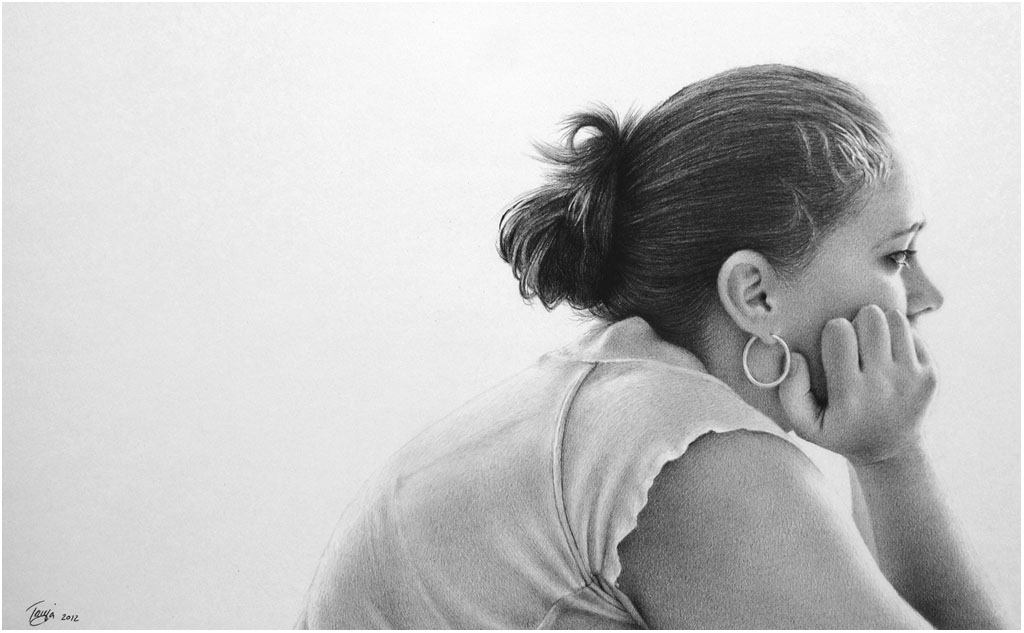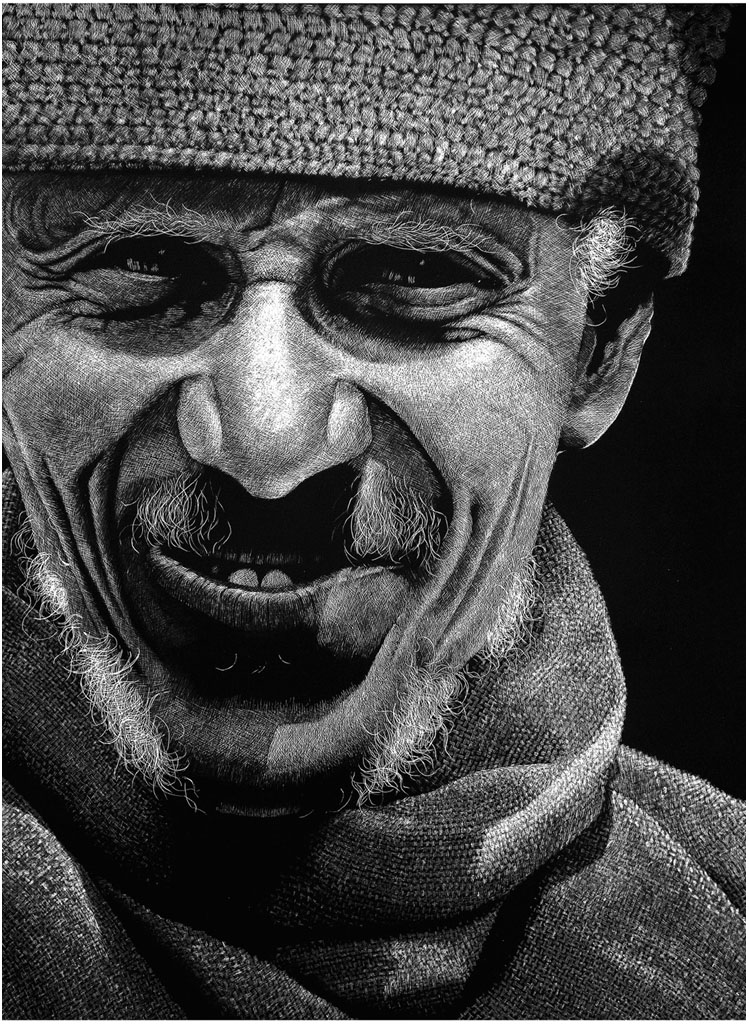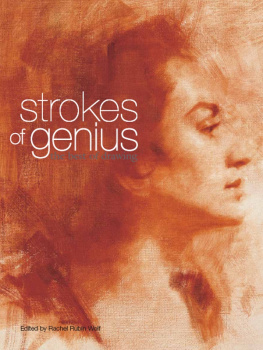Strokes of Genius 6
The Best of Drawing
value | lights
& darks
Edited by Rachel Rubin Wolf

NORTH LIGHT BOOKS
CINCINNATI, OHIO
artistsnetwork.com

FOR GENERATIONS TO COME SEA OTTERS (PREVIOUS SPREAD)
Kevin Johnson Graphite on illustration board 912" 13" (24cm 33cm)
As one of fifty artists who ventured deep into Canadas Great Bear Rainforest, I created this artwork for the Raincoast Conservation Foundations Art for an Oil-Free Coast project. Endangered sea otters represent community and family to me; they depend on each other and on the kelp forests and waters that are at risk. The final image was created using various grades of graphite, erasers and blending tools.
If realism is your goal, then the drawing must capture all the values and details that your eyes actually see rather than what your mind thinks it sees.
KEVIN JOHNSON
CONTENTS

CHARY
Candice Bohannon Graphite on bristol paper 9" 29" (23cm 74cm)
This young beauty brims with intellectual energy, hiding a well of emotion few are allowed admittance to. The drawing was slowly knit together with light, deliberate crosshatching. Value, rather than line, developed the forms until the drawing gradually took on a sculptural quality. I surrounded the figure with soft textures to convey a sense of delicacy and suppleness to the cloth and flesh. This allowed me to draw the focus to her face, framing her lively eyes with the strongest darks in my value range.
INTRODUCTION
Tonal value is one of the key art elementssome would argue the most important of all. The consideration of tonal value is essential for any drawing. Even a simple line drawing consists of decisions about value and thickness of the line. In a more complex drawing the artist generally decides on a value key, whether in the light or dark range or with a full range of values from black to white. It is tonal value that most creates the illusion of three dimensions in a drawing, and it is also the foundation of design. One cannot overstate the value of value in drawing!
Our artists would agree almost unanimously. I noted how much the artists in this volume had to say about our themetonal valuecompared with responses to past themes. Many commented specifically about how important tonal value is to their own art. Scott A. Williams echoes the thoughts of many: The correct use of value is critical for defining forms, controlling edges and creating a believable three-dimensional reality.
Many of the artists highlighted how values not only define form but create mood. Michael H. Malta suggests, One can create mood by using values correctly . Steve Wilda opines: The delicate subtleties of graphite can evoke a deeper mood than color, which can often be a distraction. Karen S. Clarkson, among others, speaks of balancing values: Pure white and pure black should be used sparingly, yet without them the full tonal range does not register. Linda Lucas Hardy emphasizes the essential nature of tonal value: Value without color has the power to stand alonecolor without value cant.
This was the first time that I remember receiving a poem in one of the captions; it expresses the pure and simple joy of drawing:
My Drawings
My Every Day
My Joy
I Love that Moment
That Noise
That Scratch
Pencil over Paper
Moment of Truth
Like Life
Like Love
WAGNER ANARCA
I hope the wonderful collection of art here in Strokes of Genius 6 stirs you toward fulfilling your creative dreams.

Rachel Rubin Wolf

WAITING
Ona Kingdon Pen and ink with a watercolor on bristol board 12" 14" (30cm 36cm)
Drawing any black animal can be challenging, but if you look at black fur in strong sunlight, there are actually huge contrasts in value. Areas in the shade can merge with the dark background, while areas caught by the sun almost appear to turn white. Harry is a purebred black Labrador. He was peering under the wooden gate on our deck at us in the garden, and I wanted to capture the stark contrast as well as the soulful expression in his eyes.
1 VALUES IN PORTRAITS

WAITING
Tanja Gant Graphite on Strathmore Bristol paper 1212" 20" (32cm 51cm)
I converted the reference photograph for Waiting to black and white and cleaned up the background, leaving only the ethereal image of the subject. Slowly and systematically, I built up the values endeavoring to capture a sense of loss and loneliness.

THE WANDERER
Kathleen S. Haney Scratchboard 24" 18" (61cm 46cm)
I met this wanderer in Ethiopia. He was a nomad crossing a mountain pass not far from Addis Ababa. With the help of a guide, I asked permission to photograph him. I emphasized his deep-set eyes by leaving the eye sockets black with just a hint of the sparkle in his eyes.

VALENCIA
Alex Manzanares Charcoal on Canson Mi-Teintes 12" 812" (30cm 22cm)
I began this portrait of my niece Valencia by making a five-value key. My intent was to meld darks into the shadows for a chiaroscuro effect. Using only those five values, I created a value study of the portrait, blocking in the simple shapes. Using the study as a guide, I drew the portrait on a mid-valued paper using HB, 2B and 6B charcoal pencils for my darks, a white charcoal for the lights and stumps to blend. I now create a value study before each of my drawings.

I GIVE YOU MY WORD
Stephen A. Yavorski Jr. Black and white charcoal on pastel paper 19" 19" (48cm 48cm)
This image represents multiple themes including honesty, trust and freedom of speech. It also symbolizes the feeling of potential attack that can cause us to hesitate when attempting to express ourselves. Using black and white charcoal pencils, I gradually built up the medium on pastel paper. Paying careful attention to value and the initial drawing, I rendered the essential lit-from-below lighting pattern. Lighting the subject in this manner helped me show a sinister mood, which is an important part of the drawings theme.
























